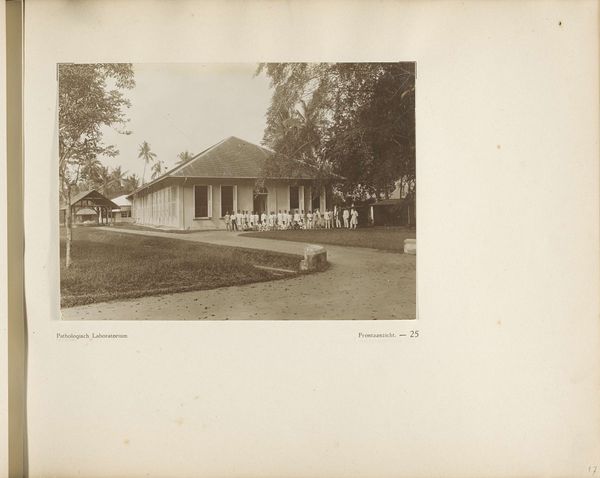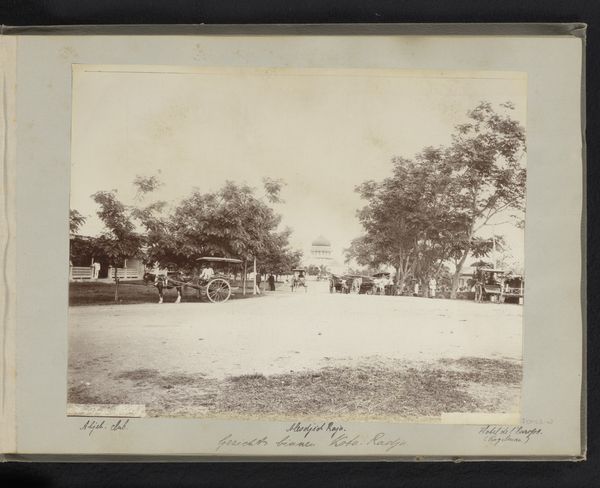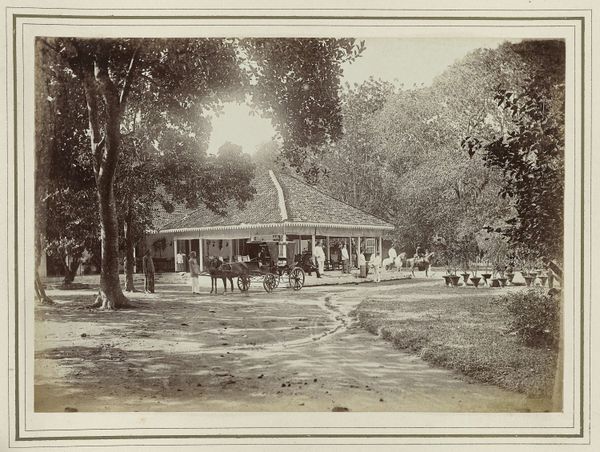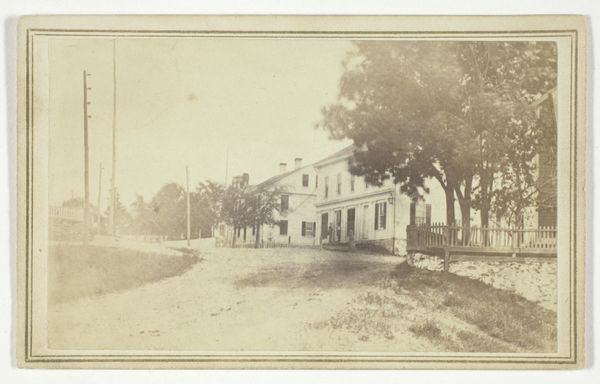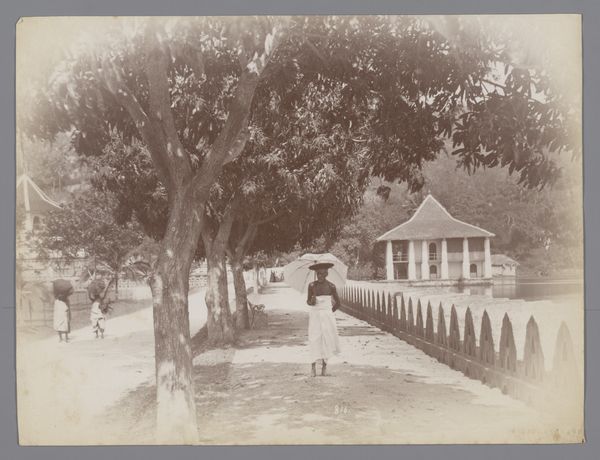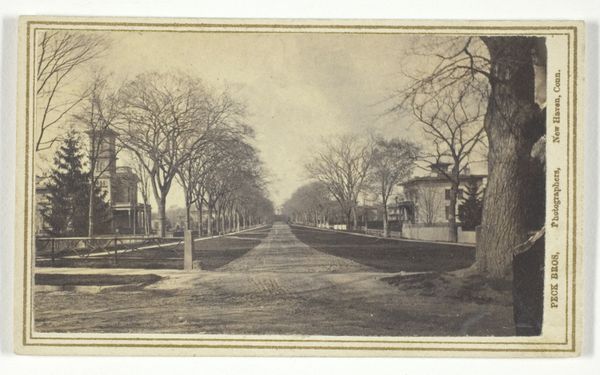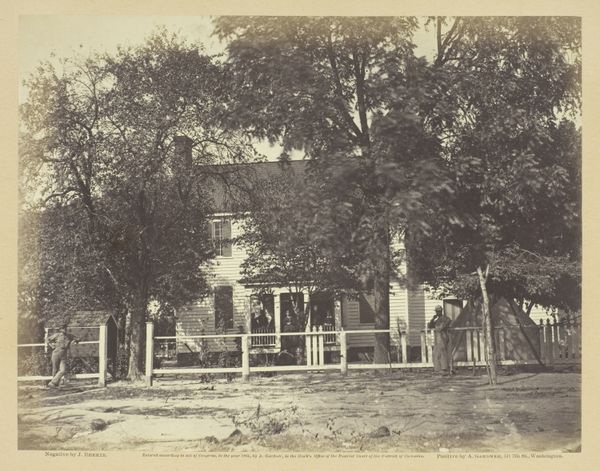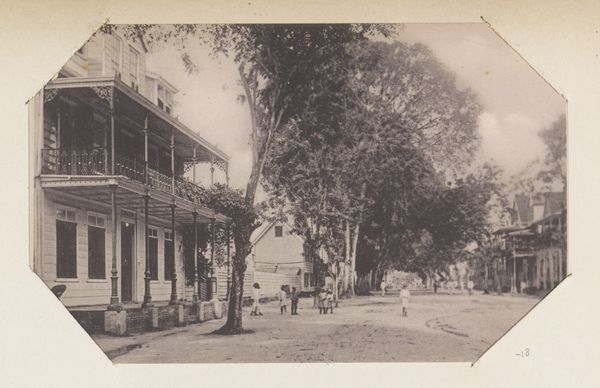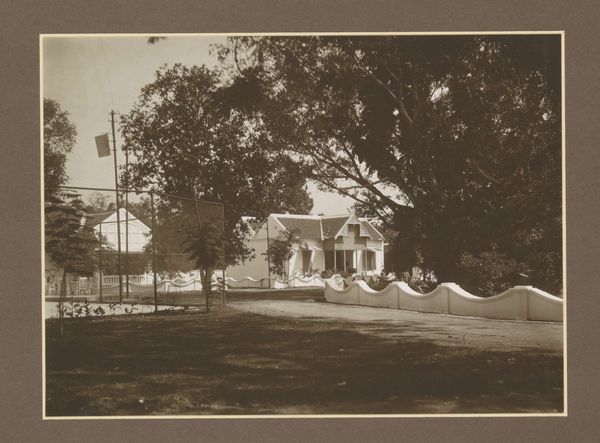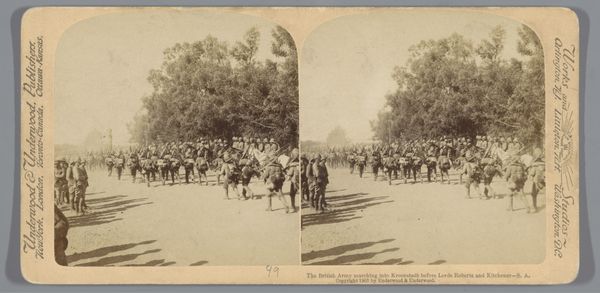
print, photography
#
aged paper
#
toned paper
#
light pencil work
#
16_19th-century
# print
#
landscape
#
photography
#
men
#
united-states
#
realism
Dimensions: 7.6 × 7.6 cm (left image); 7.6 × 7.9 cm (right image); 8.7 × 17.6 cm (card)
Copyright: Public Domain
Curator: This is J.N. Wilson’s "Court-house Savannah," a print dating sometime between 1860 and 1880, housed here at The Art Institute of Chicago. It’s quite small. What do you make of it? Editor: I'm immediately struck by the tones, almost sepia, giving it that aged feel. Look at the light pencil work; the materiality of the print feels so connected to a specific era and craft. You can almost feel the process of its making. Curator: Exactly. This work offers us insight into the social and political life of Savannah during Reconstruction. You see a group of men gathered near what I presume is the courthouse, possibly involved in some legal or political activity. Wilson’s photography provided crucial visual documentation of American life during a tumultuous time. Editor: Documentation, yes, but also the means to distribute specific perspectives. This photograph, turned into a readily reproducible print, implies a controlled narrative about that social and political life. Who made these prints, and for what audiences? Understanding their labour and how these were consumed tells us much. Curator: A crucial point. Considering that Wilson was working during a period of immense social change, particularly regarding race and power in the South, who is depicted—and who isn’t—and how is telling. What’s visible—and what isn’t—reveals a lot about the power structures at play. Editor: Absolutely. Look at the material conditions that enable its creation. What kind of paper, ink, printing techniques were accessible at the time in that place? Those constraints undoubtedly influenced not just the final image, but also its dissemination. The wear of that paper suggests its journey too; to whom and how did this object matter? Curator: And considering that images like this circulated widely, especially in the North, they also played a significant role in shaping national perceptions of the South. The courthouse here serves as a focal point, hinting at the efforts toward rebuilding civil society amidst lingering tensions. The politics of imagery are clear when considering that a northern audience would likely use these as proof of progress. Editor: Thinking about Wilson's technical choices alongside the social dynamics allows a richer engagement. The way in which it was physically crafted to deliver specific narratives provides critical context to the photograph's artistic qualities. I would argue the meaning isn't simply _in_ the image; it’s intrinsically tied to the act of production and reception. Curator: It is an evocative and multilayered artifact, a print capturing an instant, yet hinting at broader social complexities during a formative period in American history. Editor: It invites us to think about not only what the photograph depicts but how its making and circulation served particular agendas at a fascinating moment.
Comments
No comments
Be the first to comment and join the conversation on the ultimate creative platform.
